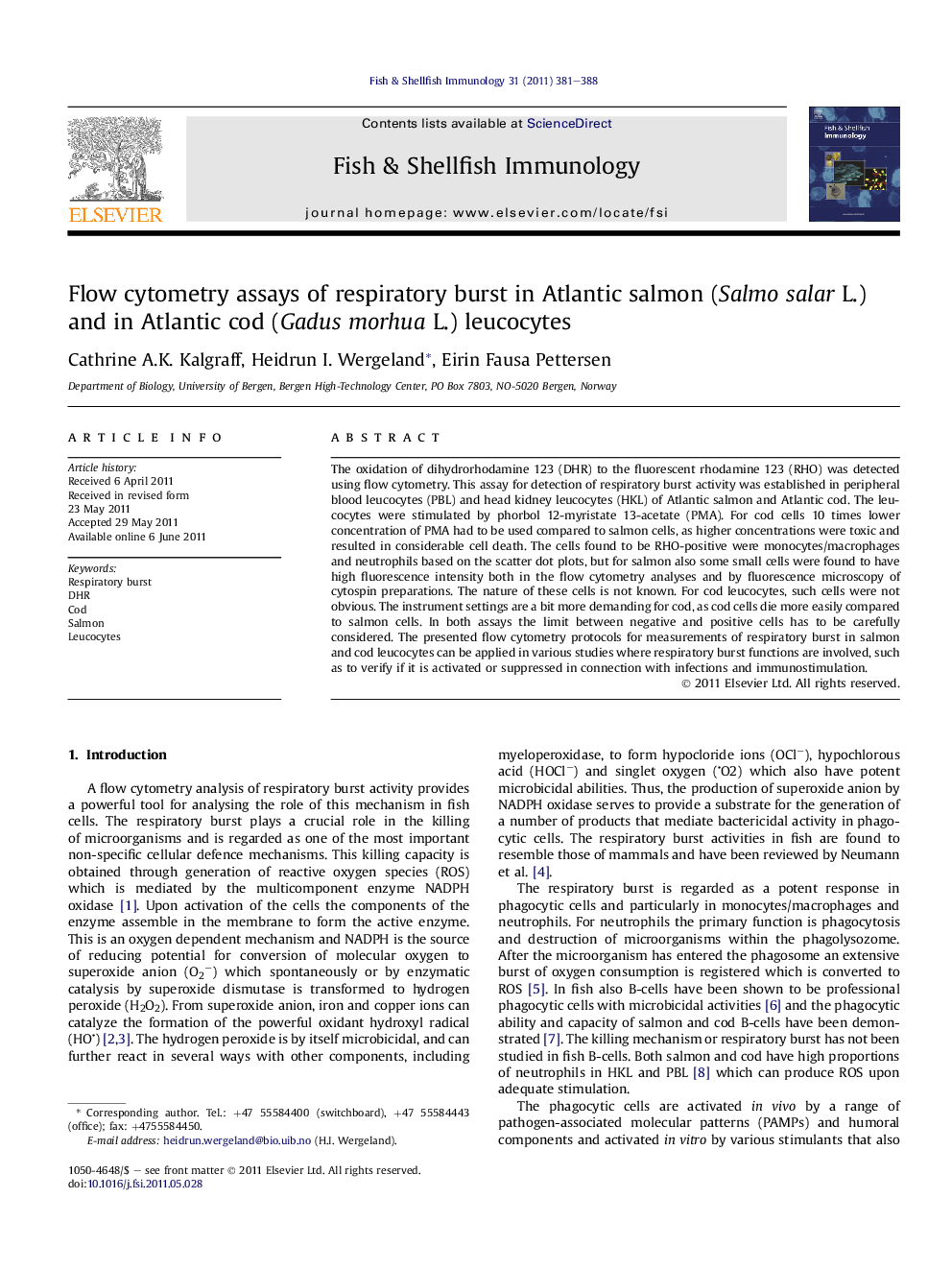| Article ID | Journal | Published Year | Pages | File Type |
|---|---|---|---|---|
| 2432417 | Fish & Shellfish Immunology | 2011 | 8 Pages |
The oxidation of dihydrorhodamine 123 (DHR) to the fluorescent rhodamine 123 (RHO) was detected using flow cytometry. This assay for detection of respiratory burst activity was established in peripheral blood leucocytes (PBL) and head kidney leucocytes (HKL) of Atlantic salmon and Atlantic cod. The leucocytes were stimulated by phorbol 12-myristate 13-acetate (PMA). For cod cells 10 times lower concentration of PMA had to be used compared to salmon cells, as higher concentrations were toxic and resulted in considerable cell death. The cells found to be RHO-positive were monocytes/macrophages and neutrophils based on the scatter dot plots, but for salmon also some small cells were found to have high fluorescence intensity both in the flow cytometry analyses and by fluorescence microscopy of cytospin preparations. The nature of these cells is not known. For cod leucocytes, such cells were not obvious. The instrument settings are a bit more demanding for cod, as cod cells die more easily compared to salmon cells. In both assays the limit between negative and positive cells has to be carefully considered. The presented flow cytometry protocols for measurements of respiratory burst in salmon and cod leucocytes can be applied in various studies where respiratory burst functions are involved, such as to verify if it is activated or suppressed in connection with infections and immunostimulation.
► Flow cytometry protocols for respiratory burst in salmon and cod leucocytes. ► Species variations were found regarding experimental conditions and results. ► PMA more toxic for cod leucocytes than for salmon leucocytes. ► RHO-positive cells were monocytes/macrophages and neutrophils. ► Also findings of small RHO-positive salmon cells of not identified nature.
